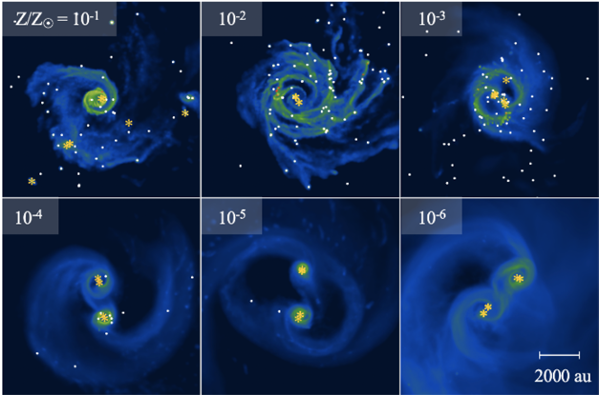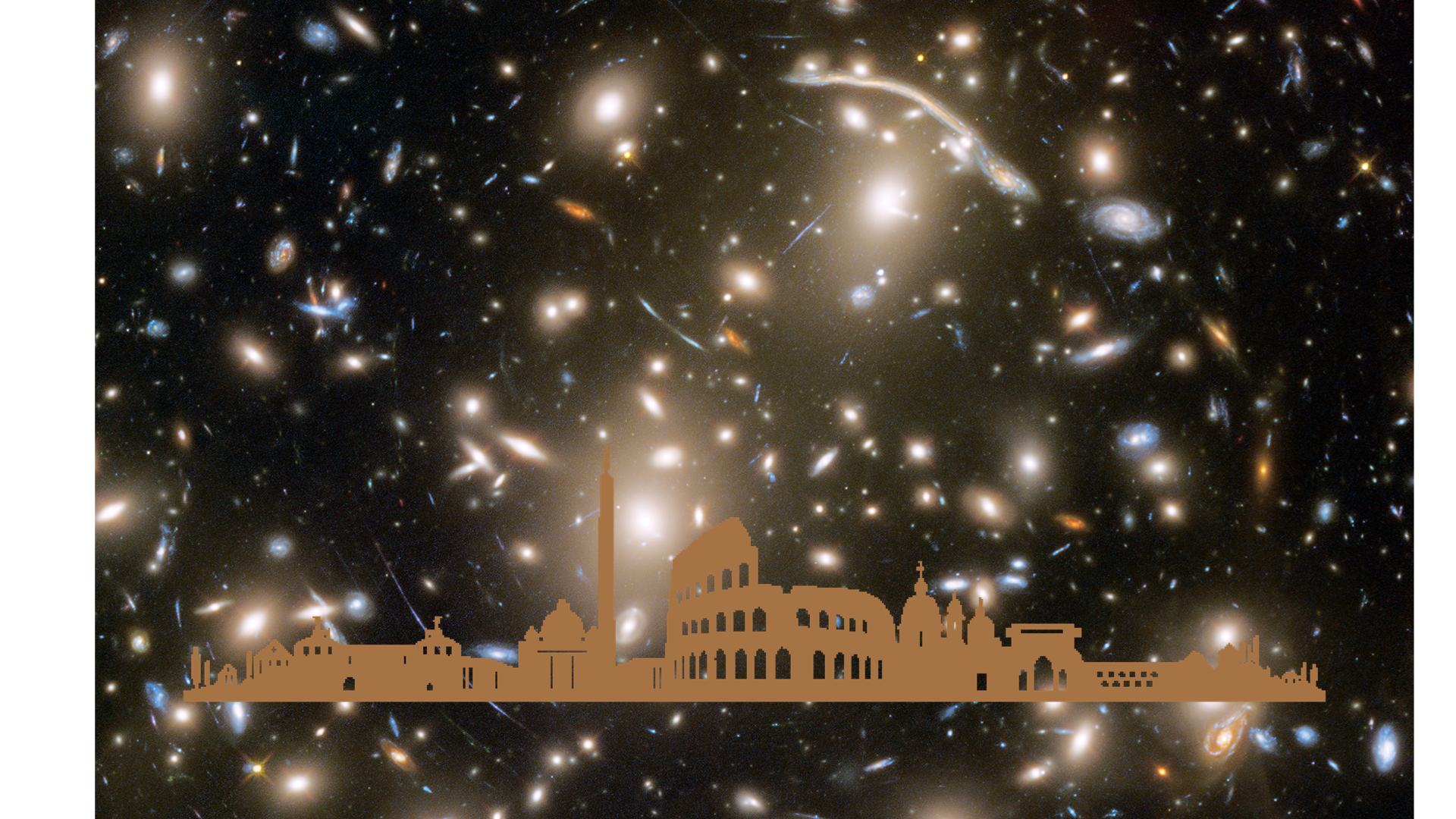Supervisor: Raffaella Schneider
co-supervisors: Rosa Valiante, Luca Graziani

Fig: Metallicity and redshift dependence of the stellar initial mass function. The panels show high-resolution simulations by Chon, Omukai & RS (2021) of a turbulent star forming cloud with different initial metallicities. Each panel shows a face-on view of the gas density in the star forming disk at the end of the simulation, with yellow asterisks and white dots representing individual stars with masses larger than and smaller than 1 Msun, respectively. It is clear that the number of low-mass stars rapidly increases with metallicity.
Chemical enrichment plays a crucial role in the thermal evolution of star-forming gas clouds. The metal abundance, both in the gas phase and in dust grains, is believed to be a key factor in the transition from a top-heavy Pop III IMF to a Kroupa-like Pop II/I IMF, occurring above a critical metallicity of Zcr=10^(-4±1) Zsun (Schneider+03; Omukai+05; Schneider+06; Schneider+12). Using high-resolution hydrodynamical simulations, we have recently shown that a more gradual transition in the stellar IMF occurs, with a larger fraction of massive stars persisting up to Z ≈ 10^(-2) Zsun (Chon+21). Moreover, the higher temperature of the CMB radiation at z ≥ 10 suppresses cloud fragmentation and reduces the number of low-mass stars in star forming regions with metallicities Z ≥ 10^(-2) Zsun (Schneider+10, Chon+22). As a result, we expect stellar populations with Z ≤ 10^(-2) Zsun or forming at z ≥ 10 to exhibit a mass spectrum consisting of a low-mass Kroupa-like component peaking at m∗ ≈ 0.1 Msun and a top-heavy component peaking at m∗ ≈ 10 Msun, with the mass fraction in the latter increasing with redshift and decreasing with metallicity. A non-universal IMF that depends on metallicity and redshift has far reaching implications for the evolution of the first galaxies. A top-heavy IMF has been recently advocated as a possible explanation for the number density of UV bright galaxies detected by JWST and its apparent lack of evolution between z ≈ 9 and z ≈ 13 – 17 (Trinca+23b), which are in tension with standard model predictions. At z > 10, spectroscopically confirmed galaxies are found to host ≈ 10^(7.2) – 10^9 Msun in stars, with stellar populations having formed half of their mass on timescales 16 – 70 Myr, and sub-solar metallicity (< 0.1 – 0.6 Zsun). As such, these galaxies are massive stars-dominated systems, and are therefore very sensitive to the shape of the high-mass end of the stellar IMF. In addition, stellar winds are believed to be weak at low metallicity, providing less kinetic energy
input to stellar environments. Metallicity also affects the stellar progenitor mass above which massive stars fail to explode and quietly collapse to BHs, with important implications for the timescales on which mechanical feedback due to supernova explosions operate. In this thesis project, we propose to investigate the implications of a non-Universal IMF on the physics of the first galaxies, implementing a parametric form of the IMF in the semi-analytical model CAT (Cosmic Archaeology Tool, Trinca+22). The project foresees comparison with JWST spectroscopic and photometric observations in collaboration with observers at the INAF/OAR.
References:
Chon+21 MNRAS, 508, 4175
Chon+22 MNRAS, 514, 4639
Omukai+05, ApJ, 626, 627
Schneider+03, Nature, 422, 869
Schneider+06 MNRAS, 369, 1437
Schneider+10 MNRAS, 402, 429
Schneider+12 MNRAS, 419, 1566
Trinca+22 MNRAS, 511, 616
Trinca+23b arxiv:2305.04944
